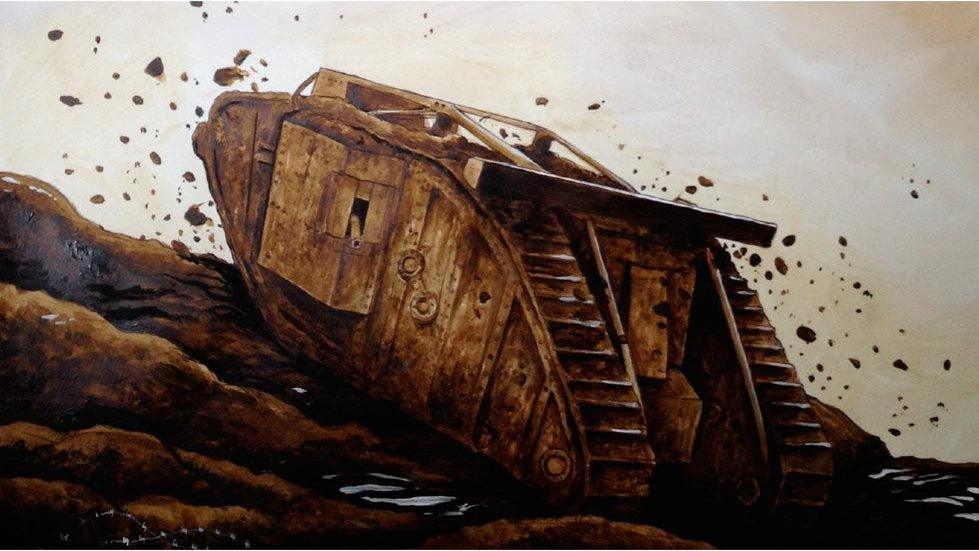War stories: The making of new WW1 anthology
- Published
To End All Wars is a new anthology of 27 short graphic novel-style stories based on real-life events, characters, myths or consequences of World War One.
The stories cover combat on land, sea and in the air, the treatment of spies and the conflict's impact on families.
The project has involved more than 50 unpaid contributors from 15 countries. They include an attorney-turned-writer living in San Francisco, an Argentine artist, an Edinburgh comic book store employee and a political cartoonist whose father had General Douglas Haig as his godfather.
Real-life people and events, including a Scottish father and son and historical figure Mata Hari, inspired the stories.
Money from sales of the book will be donated to medical humanitarian organisation, Doctors Without Borders.
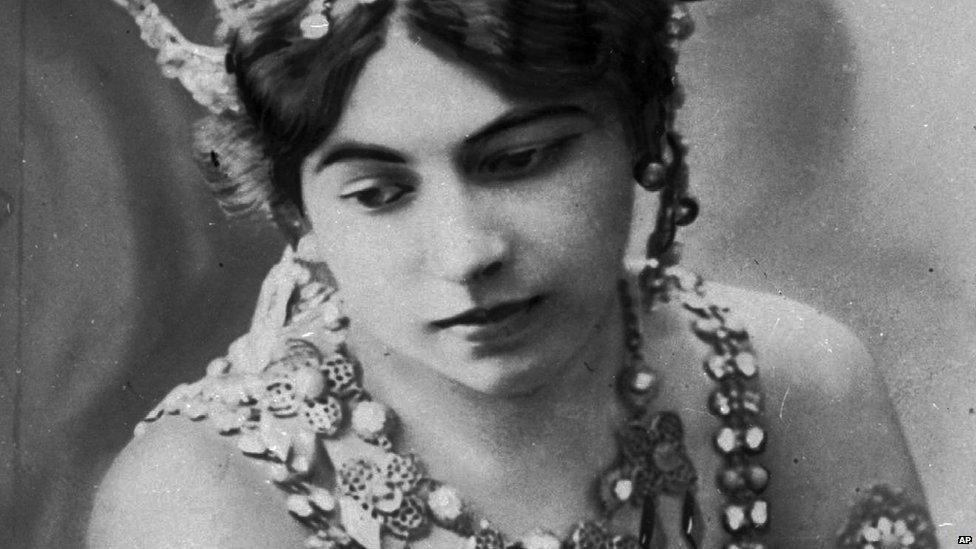
The Final Confession of Madame MacLeod is a story in the anthology about Dutch-born Margaretha Geertruida Zelle, better known as Mata Hari.
Married to Campbell MacLeod, a Dutch army officer of Scottish descent, she later became an exotic dancer in Paris and was accused by the French of spying for Germany.
Following a short trial, she was executed by firing squad in 1917.
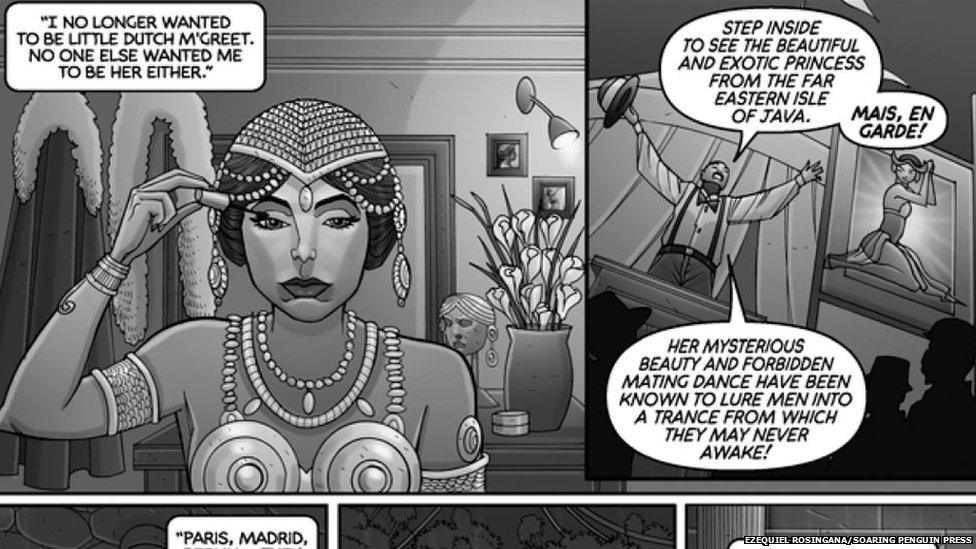
Susan Wallis, who lives in San Francisco's Bay area, wrote the script for The Final Confession of Madame MacLeod. A trained attorney, Susan writes short stories.
She said: "I've always been fascinated by the WWI era. At a time steeped in destruction and loss, there was a vibrant artistic joie de vivre.
"I think Mata Hari exhibits this contrast: damned and full of life.
"It was, however, a snippet I read about her refusal to wear a blindfold at her execution that gave me the idea for this particular story - a first-hand account of Mata Hari's life in the hours leading up to her execution."
For Argentine artist Ezequiel Rosingana, who illustrated the story, it was the first time he had tackled a WW1 theme.
Ezequiel said: "Since childhood I have been very interested in history and in this case I am a fan of several films about the conflict. My top three are All Quiet on the Western Front by Lewis Milestone, Path of Glory by Stanley Kubrick and Le Grande Illusion by Jean Renoir."
The artist was familiar with Mata Hari's history. He added: "The script is from the perspective of Mata Hari. It suggests that she was punished for exercising her freedom as a woman in a world dominated by men."
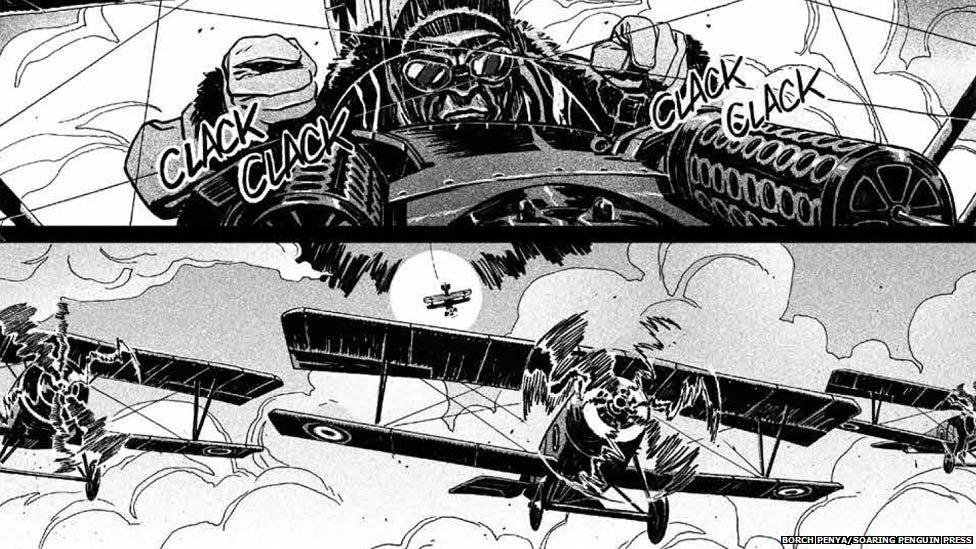
Susan's husband Sean Fahey wrote the script for The Hunter, a story of aerial combat illustrated by Borch Penya.
As well as The Hunter's portrayal of war in the air, To End All Wars also tackles various aspects of the conflict on land and also at sea in Ian Douglas and Stjepan Mihaljevic's story Dead in the Water.
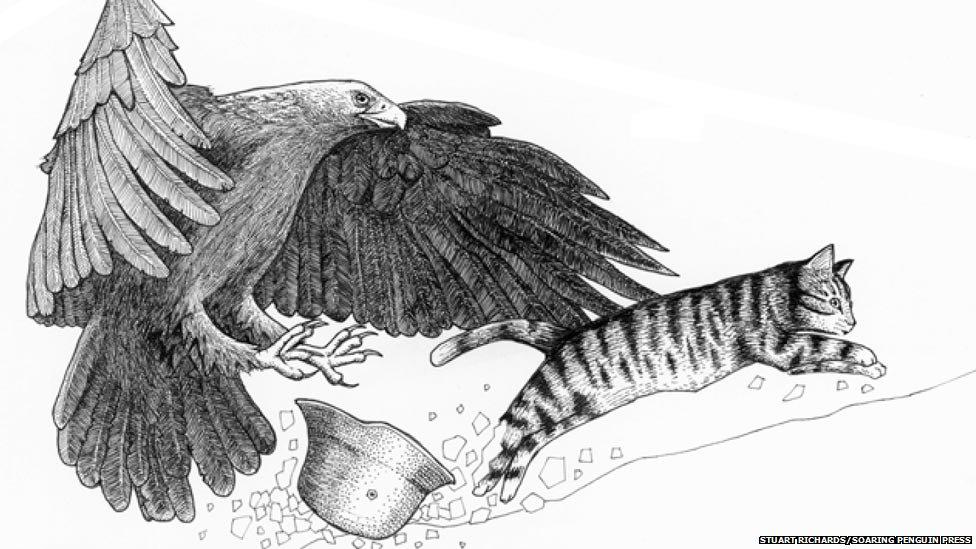
Stuart Richards, a social work postgraduate student with no formal training in art, wrote and illustrated Il Gatto, a dialogue-free tale about a cat.
He said: "I'm a keen amateur. I don't use digital and prefer old fashioned paper, pencil and ink.
Stuart, who is from Aberdeen and now lives in Edinburgh, grew up reading the Beano, Dandy and Commando and later The Sandman, Hellboy and Maus comics and graphic novels.
He said: "I got the idea for Il Gatto from the film Joyeux Noel about the WW1 Christmas Day truce.
"In the film there is a cat that goes back and forth between French and German lines and the soldiers on each side claimed it for their own and gave it different names.
"It's a lovely piece of comic relief but, in the commentary, the directors said this cat was shot as a spy.
"They had left this anecdote out of the film, partly because they felt the audience wouldn't believe it, and also because they felt the audience might feel more strongly about the death of a single cat than the multitudes of soldiers.
"I couldn't believe it at first, it seemed to epitomise the insanity of war but it was a true story and there are other examples."
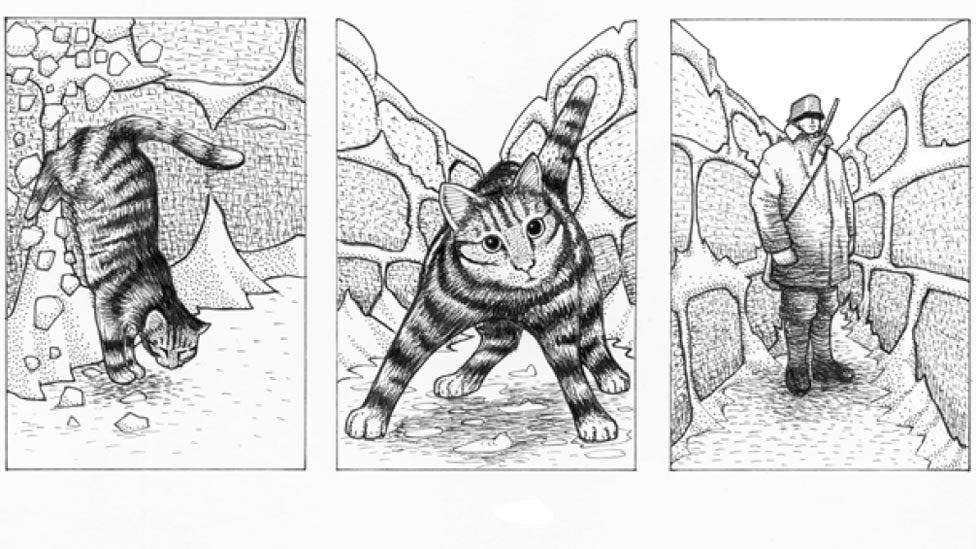
Il Gatto is set in the Dolomites where armies of Italy and the Austria-Hungarian Empire fought. It was a theatre of WW1 previously explored in the 1998 graphic novel White Death by The Walking Dead comic book artist Charlie Adlard and Helensburgh-born writer Robbie Morrison.
Stuart said: "I decided to make it wordless, because the cat was the sole protagonist and words felt largely redundant."
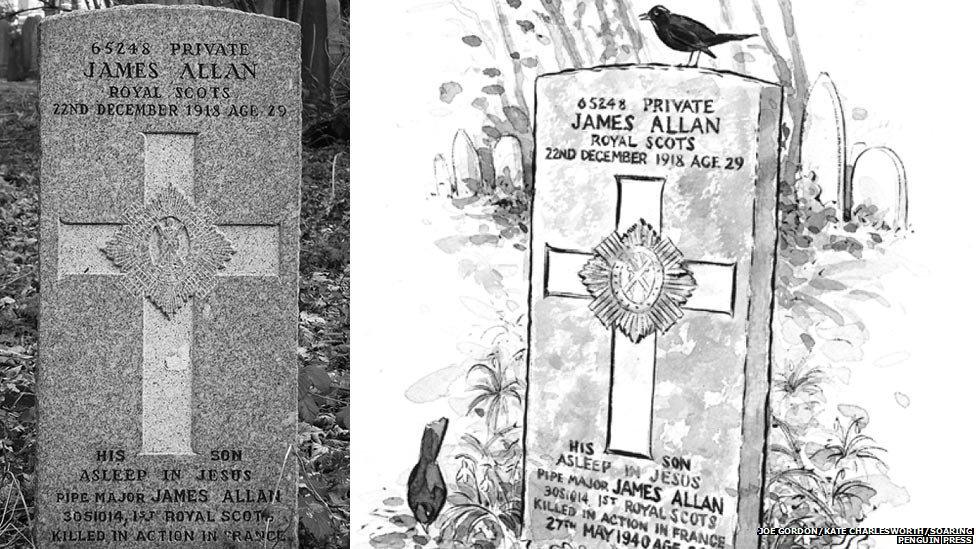
A gravestone in Dalry Cemetery, a short walk from Haymarket Station in the west of Edinburgh, was the inspiration for Memorials to the Mothers.
The stone marks the grave of a father and son, killed years apart in WW1 and WW2.
Illustrated by Kate Charlesworth, the story was written by Joe Gordon, who is originally from Kirkintilloch near Glasgow and now lives in Edinburgh. Joe runs the web store for the capital's Forbidden Planet comic book shop.
He said: "There are several Commonwealth war graves in that old cemetery but that one has always caught my eye on walks because of the unusual nature of it.
"Being a father and son and covering two wars, it always made me wonder if the father thought to himself at least my son will never have to go through anything like this, no-one would ever be stupid enough to have another war after this."
It later struck Joe that there was a name missing from the gravestone, and from every war memorial.
"The mothers of the fallen, who are no less casualties than the active soldiers," said Joe.

Rather than having comic book-style panels with speech bubbles and dialogue boxes to tell their story, Joe and Kate mixed prose with illustrations.
Joe said: "Kate came up with some lovely ideas, ideas which I have to say never occurred to me or the editors. For instance, having the sort of keepsakes of a child mums keep forever - baby boots, a lock of hair."
Kate, who is originally from Barnsley, South Yorkshire, but has lived in Edinburgh for the past 12 years, previously drew the cartoon strips Life the Universe and (almost) Everything for New Scientist, Millennium Basin for The Guardian and Naughty Little Monkeys for the Pink Paper. She has also illustrated a story about the Suffragettes.
She said: "I didn't want to make any drawings of fighting or death for To End All Wars.
"I had in mind Stanley Spencer's paintings at Burghclere's Sandham Memorial Chapel in Hampshire, which is covered in epic canvases of men at their ablutions, cleaning kit, tending animals, a massive resurrection scene - anything but fighting, horror and death."
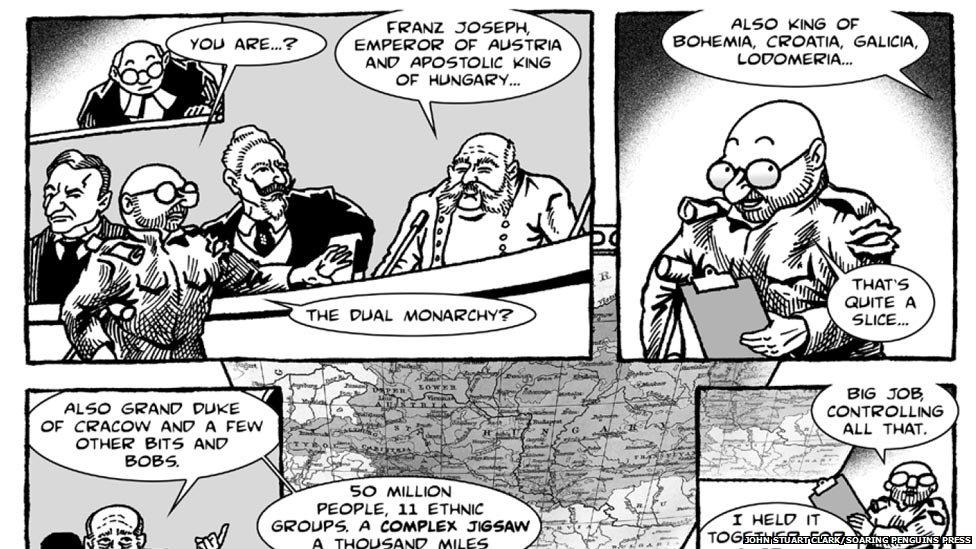
To End All Wars is edited by Jonathan Clode and John Stuart Clark, who have also contributed to the anthology's stories.
John, a political cartoonist since 1979, wrote and illustrated the book's The Iron Dice, a story set in a fictional WW1 war crimes court.
"My mother is Austrian and that her family hails from a village close to the Emperor Franz Ferdinand's country retreat of Bad Ischl did make me want to write stories from a German and/or Austrian perspective," said John.
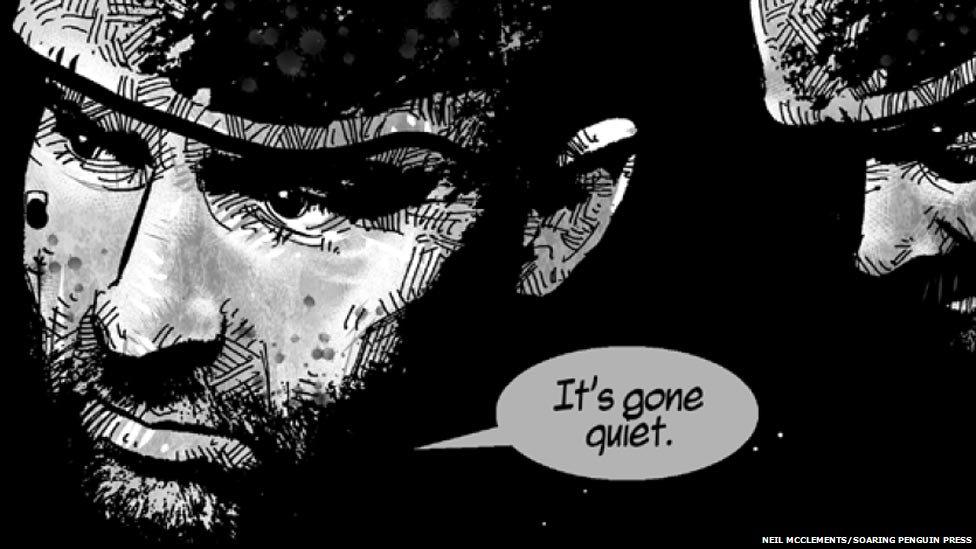
John, who also provided the lettering for another of the anthology's stories - Between the Darkness - also has a link with Scotland through his father whose godfather was WW1 British Army general Sir Douglas Haig.
John said: "My grandfather, Tommy Clark, hailed from Broughty Ferry and joined the Fife and Forfars in 1915, eventually fighting in the Middle East.
"He survived the war, settled in London and married Maud Rose, the daughter of the woman who was then manageress of the very posh DaVeer Hotel on The Mall.
"In 1921, the year my father was born, Lord Haig was in residence on the top floor of the hotel.
"My dad, Ian Gordon Clark, thinks that his father Tommy simply took the opportunity to ask Haig and his wife if they would be his son's godfather.
"They had a spare afternoon and agreed."
- Published14 May 2014
